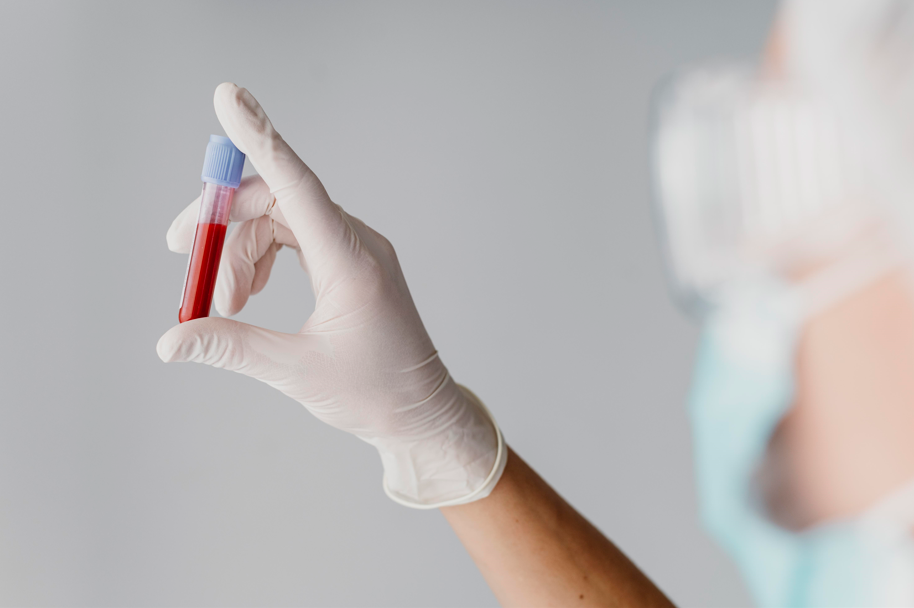What does a haemolysed blood test result mean?


Related products
Blood tests are one of the most widely used tools in modern healthcare, providing quick and accurate insights into countless aspects of your health. They can detect infections, measure hormone levels, monitor chronic conditions, and guide medical decisions. However, their reliability hinges on one often-overlooked factor: the integrity of the blood sample itself. One of the most common reasons a blood sample becomes unusable is haemolysis—the breakdown of red blood cells. When this occurs, your results can be skewed or the sample may be entirely rejected by the lab, requiring you to repeat the test. Haemolysis doesn't always reflect a medical problem in your body; often, it's the result of errors in how the blood sample was collected, stored, or transported. This can be particularly frustrating when using home blood testing kits. Fortunately, with the right knowledge and techniques, haemolysis can often be avoided. In this article, we’ll explore the causes, implications, and preventive strategies related to haemolysed blood test results—along with what they may mean for your overall health. If you're planning to start monitoring your health from home, platforms like Welzo Home Blood Tests offer user-friendly, medically-approved kits. They’re designed with clear guidance to ensure your sample stays intact and accurate during transit.

What Causes Haemolysis?
Haemolysis happens when red blood cells break down and release their contents into the plasma. This is typically caused by physical damage during sample collection or transport, but environmental factors also play a role. Common causes include: Excessive squeezing of the finger during self-collection, Forceful suction during venous draws, Shaking rather than gently inverting the blood tube, Temperature fluctuations, especially cold weather during shipping, Delays in sending the sample to the lab. While a single haemolysed sample might not seem serious, repeated instances can delay critical diagnoses. For example, haemolysis can falsely elevate potassium levels, potentially masking or mimicking conditions like kidney disease. If you’re concerned about broader health issues, a comprehensive Full Body MOT Health Check can assess multiple organ systems and catch underlying problems that smaller panels might miss.
How Does Haemolysis Influence Testing?
Once haemolysis occurs, the integrity of the blood test is compromised. This is particularly problematic in tests that depend on the accurate concentration of substances like potassium, enzymes, or haemoglobin. For instance: High potassium readings may be falsely elevated due to red blood cell rupture. Liver function markers like LDH and AST can appear abnormally high. Haemoglobin release can interfere with colourimetric readings used in various assays. Most laboratories will mark these samples as "haemolysed" and discard them, meaning no results will be issued. That’s why many home testing providers emphasise quick turnaround and stability during shipping. If liver health is a concern, the Bilirubin Blood Test specifically helps assess whether there is excessive red blood cell breakdown happening inside the body or from an external factor like poor sample handling.
Sample Collection: How Technique Affects Your Results

Correct technique during sample collection is your first line of defence against haemolysis. Poor technique, especially during self-collection, is the number one cause of unusable blood samples. Tips for proper collection: Massage the finger gently instead of squeezing. Allow alcohol used for disinfection to dry completely before pricking. Use your ring finger, which often provides better blood flow. Keep your hand below heart level to let gravity assist. Warm up your hand to improve circulation before starting. For those monitoring hormonal changes or deficiencies, using a targeted test like the Free Testosterone Blood Test ensures you're checking an essential hormone accurately—provided the sample is collected correctly and handled properly.
Environment and Transport: Keeping the Sample Stable
Once the blood is drawn, proper storage and timely transportation become just as important. Environmental exposure and delay in delivery are among the most overlooked yet significant causes of haemolysis. Key things to remember: Send your sample the same day it’s collected. Avoid exposure to extreme temperatures (e.g., leaving the sample near a heater or in cold post boxes overnight). Protect the sample from vibration and motion by sealing it properly in provided packaging. For individuals actively monitoring cardiovascular risk, the Cholesterol Blood Test provides valuable insights. Since lipid levels can also be affected by sample degradation, ensuring your sample reaches the lab promptly is essential for accurate results.
How Can You Minimise the Risk of Haemolysis?
Most causes of haemolysis can be prevented with simple adjustments to your collection routine. Whether you're collecting at home or in a clinical setting, these precautions help ensure sample quality. Practical tips: Stay well-hydrated before the test. Warm your hand and improve circulation with light exercise. Let disinfectant dry before the finger prick. Gently invert the tube if mixing is required—do not shake. Mail your sample as soon as possible using tracked postage. Those testing for fertility, especially women trying to conceive, may want to consider the AMH Blood Test. As with other hormone tests, sample quality is critical to obtain meaningful, reproducible results.
Can Haemolysis Indicate a Health Condition?
While most haemolysis is external (caused after collection), there are cases where it occurs within the body—this is known as in vivo haemolysis. When red blood cells break down prematurely in the bloodstream, it may signal a serious medical issue. Possible causes: Autoimmune haemolytic anaemia, Sickle cell disease, Certain infections or medication reactions, Liver dysfunction, which impairs red cell lifespan. If your sample is consistently haemolysed despite correct collection, your doctor may suggest a deeper diagnostic approach. The Advanced Thyroid Function Blood Test, for example, can help identify hormonal imbalances that contribute to abnormal blood cell dynamics or affect red blood cell turnover.
Haemolysis and Home Testing—What You Should Know
With the increasing availability of home test kits, haemolysis risk has become more relevant than ever. While home testing is convenient, it relies heavily on user preparation and proper handling. Home kits offered in the All Health Tests Collection cover a wide range of panels—from hormones and metabolism to organ health—giving users a complete picture without needing to visit a clinic. Similarly, if you're an athlete or active individual tracking endurance, muscle recovery, and metabolic health, the Sports Performance Tests Collection includes options tailored to your needs—provided the sample integrity is preserved.
Conclusion: The Bigger Picture on Haemolysed Blood Samples
Understanding what a haemolysed blood sample means isn’t just about avoiding repeat tests—it’s about ensuring your health decisions are based on accurate information. Blood tests offer deep insights, but only when the sample has been handled properly from start to finish. Whether you're using a full diagnostic panel or a targeted test, haemolysis can significantly impact the clarity of your results. Fortunately, by staying hydrated, warming your hands, using proper technique, and mailing your sample promptly, you can greatly reduce the risk of haemolysis. Thanks to services like Welzo, accessing quality home testing is easier than ever. By choosing reliable tests like the Cortisol Blood Test, and following best practices for sample handling, you can ensure every result is accurate and actionable. Empower yourself by learning the small steps that make a big difference—because when it comes to your health, accuracy isn’t optional, it’s essential.
































 Rated Excellent by 26,523+ Reviews
Rated Excellent by 26,523+ Reviews